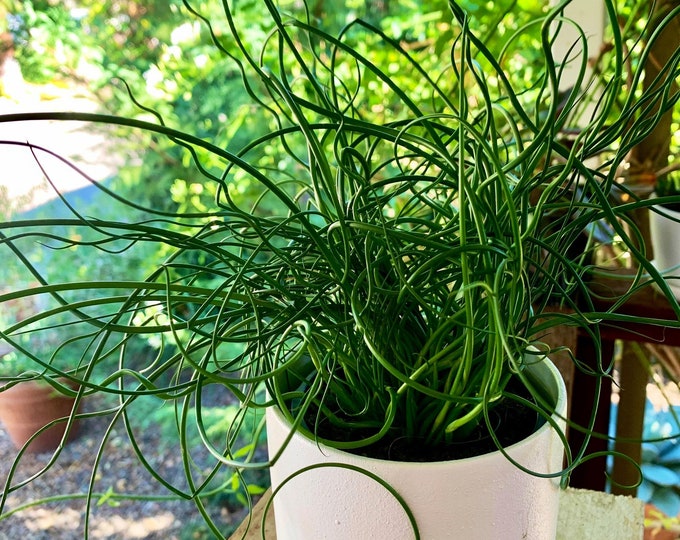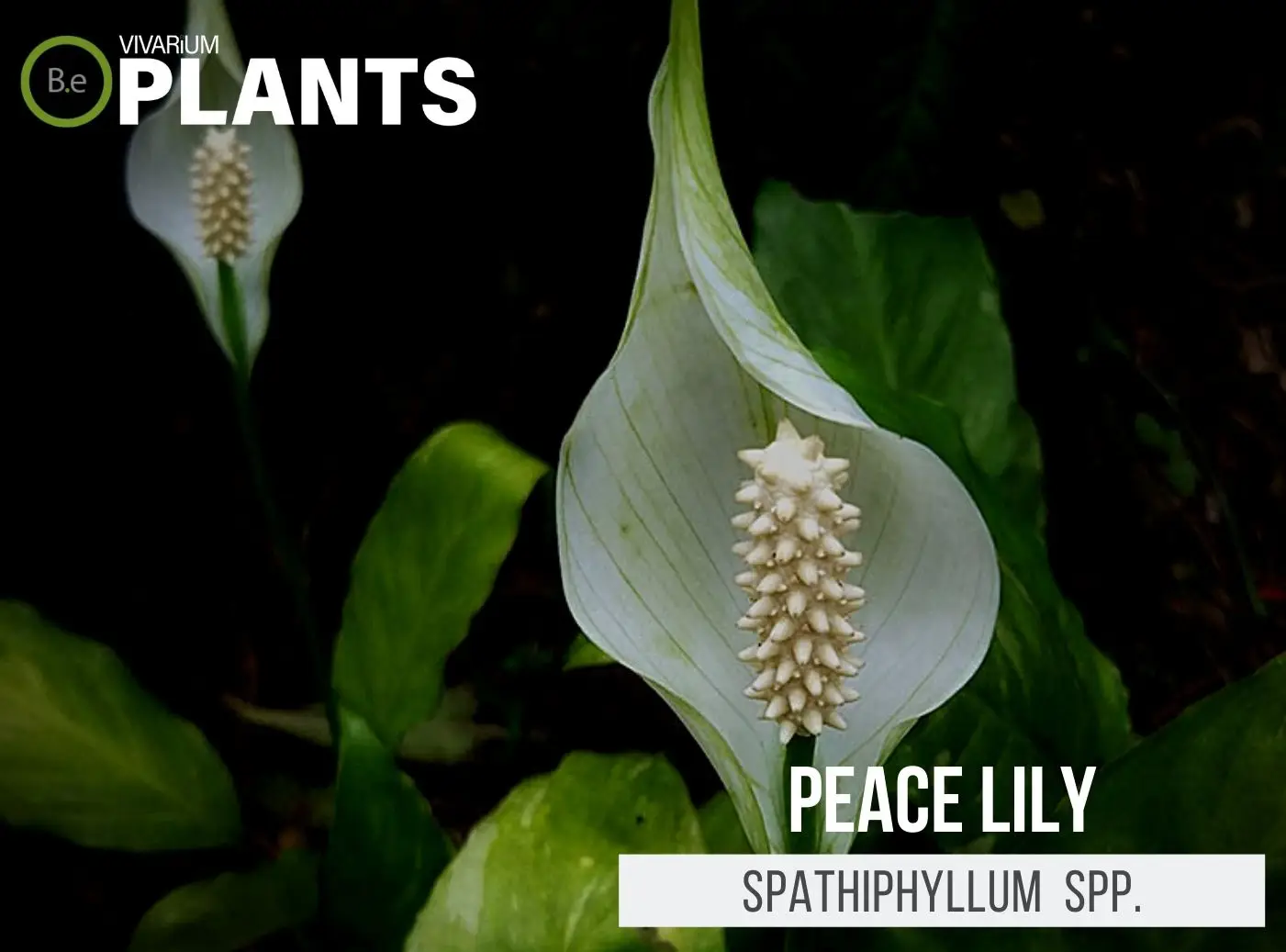Juncus effusus ‘Spiralis’, also known as corkscrew rush, is a unique semi-aquatic plant that is perfect for any beginner hobbyist.
This tropical plant can grow while completely submerged and has a unique corkscrew-like pattern that makes it easily recognizable.
It grows best in water temperatures around 70 degrees, reaching heights of about 12-20 inches.
Corkscrew rush can be used for vegetative filtering in aquariums as well as spiny foliage for terrariums.
Making it a great choice for those who want to maintain an aesthetically pleasing and healthy miniature ecosystem.
| Quick Stats: | |
|---|---|
| Scientific Name | Juncus effusus ‘Spiralis’ |
| Common Name | Curly-leaf Corkscrew Rush, Twisted Rush |
| Family Name | Juncaceae |
| Habitat | Bog (Semi-Aquatic) |
| Temperature | 70°F |
| Height | 12 to 20 inches |
| pH | 6.5 to 7.5 |
| Lighting | Bright |
Table Of Contents:
ToggleWhat is a Corkscrew Rush?
Juncus effusus ‘Spiralis’, commonly known as corkscrew rush, is a unique underwater aquatic species of the Juncus family.
Its curled leaves have a spiraled pattern, giving the plant its common name.
Its leaves are slightly stiff, yet not rigid, making it perfect for adding life and texture to a vivarium.
Corkscrew rush tends to be a slow-growing, low to medium-maintenance plant.


Corkscrew Rush Facts
Corkscrew Rush is native to the United States, Canada, and the Caribbean.
Although its underwater environment is ideal, this species of Juncus can also flourish in wetland, bog, and marsh-like environments.
Corkscrew rush prefers bright light but can live in low lighting. This plant can be grown in both fresh and saltwater aquariums.
It is also edible, so it can also be cooked and eaten.
Description
This plant can reach heights up to 20 inches and will branch out toward a full, circular shape.
Although it is fairly small in size, it stands out in a tank due to its unique leaves that are shaped like a spiral.
Conversely, its leaves are commonly seen in shades of green, ranging from light to dark.
The beauty of the corkscrew rush is that it varies in color based on its environment, much like an aquatic mood moss.
Habitat
Corkscrew rush can adapt to almost any water environment.
However, this beautiful plant needs plenty of open space to spread out, making it important to provide a wide substrate.
Therefore, larger tanks are best to house this tropical plant, so if your tank is smaller than 10 gallons, it would be wise to opt for less space-consuming plants.
PH Preference
Corkscrew rush does best when the pH of the aquarium or pond is between 6.5 and 7.5.
It can tolerate a broader range, from 5.5 to 8.5, but these conditions may inhibit its growth.
Vivarium Type
The corkscrew rush is quite an easy-going species.
With that in mind, it will not be too complicated when it comes to choosing the type of enclosure it is grown in.
It is best to try and replicate the plant’s natural habitat as much as possible.
Doing so will make it easier to provide this foliage plant with its basic needs.
The proper setup and theme of the enclosure will make a big difference to the overall look and health of the plant.
Be sure to choose setups that are moist and high in humidity. Here are recommended vivariums it will do well in:
- Paludariums – Half aquatic/ half terrain-based enclosure.
- Terrariums – Fully terrain-based enclosures with little to no aquatic features.
- Ripariums – Mostly aquatic-based enclosures with some terrain features present.
- Aquarium– Fully aquatic-based enclosure with little to no dry terrain.
Vivarium Placement
Corkscrew rush can be used for foreground décor, where it will weave around any type of rock scape or driftwood.
It can also be used as a background plant to give the vivarium a lush depth of field.
It is also extremely adaptive, so whatever environment it is in, Juncus effusus will be able to survive.
This semi-aquatic plant will not be the best candidate for dryer, desert-like, land-based vivariums.
Substrate
Corkscrew rush can be planted in any kind of terrarium substrate, such as gravel, sand, or even just classic terrarium soil mix.
Be sure that it is always kept clean and free of debris.
This species doesn’t anchor itself down, so it should be kept in a secure location beneath rocks and wood to prevent it from drifting.
Lighting
When it comes to vivarium lighting, the corkscrew rush will do well in almost any enclosure.
It thrives in bright light and can tolerate a bit of direct sunlight, but make sure not to burn the plant by leaving it in the sun for too long.
The best scenario for this plant is a mix of bright light and some shade.
Buy Corkscrew Rush
When it comes to buying Juncus effusus, there are a few things to keep in mind.
Making sure the plant is healthy when purchased is essential for its success in a vivarium or pond.
Vegetation that is already in poor conditions will have a very hard time adjusting to new environments.
Click the image below to find out more about the current price and other relative info about this plant.


Corkscrew Rush Care and Propagation
The corkscrew rush is fairly low maintenance.
It needs to be watered regularly and its dead leaves should be removed as soon as they start to become brown.
This semi-aquatic plant is relatively easy to propagate, as it will easily produce young plants from its parent stems.
It is best propagated by separating the plant root ball and replanting the individual pieces.
How to Grow
To ensure Juncus effusus flourishes, make sure to properly maintain the appropriate water parameters for this plant.
A stable temperature of around 70 degrees is optimal for this species, as temperatures greater than this can lead to stunted growth.
Apart from this, the plant can thrive with minimal care, making it a great option for indoor and outdoor setups.
Watering
Corkscrew rush should be kept in a vivarium or pond with consistent water circulation and quality.
Make sure to also remove any debris or excess plant matter that may accumulate in the tank, as this can pollute the water quality and affect the growth of coral.
Be sure to top off these aquatic plants with water on a regular basis if the water level begins to drop, as once the stems become exposed, the plant may die.
Plants Similar to Corkscrew Rush
Adding diversity to an enclosure is key to an aesthetically pleasing setup.
Try mixing up the look of your vivarium with different flora that can easily co-exist in the same types of environment.
Furthermore, if for some reason you find the corkscrew rush hard to acquire or would like to consider something similar to this plant…
Here are other foliage plants you might find will do well with or in place of Juncus effusus:
Conclusion
In conclusion, the corkscrew rush is a great tropical plant to have in a tank or pond.
Not only is it unique with its distinctive curled patterns and shades of green, but it is also fairly low maintenance.
This species of Juncus can even be used for vegetative filtration as well as for décor.
It may take some getting used to when determining the best water parameters for the plant, but its ease of care makes up for it.
Frequently Asked Questions
No, Corkscrew Rush (Juncus effusus ‘Spiralis’) is not an invasive species in many parts of the world. It is a low–maintenance ornamental grass that is an excellent choice for use in water gardens and vivariums.
Corkscrew rush is an ideal plant for both indoors and outdoors. It blooms in partial and full sun and thrives in moist, wet areas but can easily tolerate some dryness and most soil types.
Yes, Corkscrew Rush is a perennial plant. It is a flowerless ornamental grass known for its twisted, spiral–like stems and clumps of bright green leaves. It is a great choice for adding texture and interest to any garden or vivarium.
Corkscrew rush can turn brown due to several different factors, such as underwatering, overwatering, cold temperatures, and an abundance of salt in the soil. To prevent browning of the plant, make sure to water it when needed, and avoid overwatering it. Additionally, ensure that it is planted in a location that receives adequate sunlight and is protected from extreme temperatures. Lastly, test the soil for salt levels, and if too high, use a soil additive to reduce it.
Yes, corkscrew rush (Juncus effusus ‘Spiralis’) is winter hardy, as it is cold tolerant down to USDA hardiness zones 4–10.
Yes, corkscrew rush (Juncus effusus ‘Spiralis’) can be divided. The best time to divide it is in spring or autumn when the soil is moist but not soggy. To divide it, dig it up, shake off the soil, and then separate the roots into smaller sections with your hand, a sharp knife or garden fork. The pieces should then be replanted in the same type of soil.



